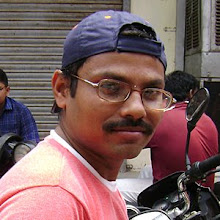The tomb of Sher Shah Suri, the emperor who built the Grand Trunk Road from Kolkata to Peshawar in the 16th century and thus laid down the foundation of the Indian highway system, is being refurbished here at a cost of Rs.94 crore (Rs.940 million) so that it becomes one of Bihar's major tourist destinations.
Officials in the state tourism department said the surroundings of the tomb, in the emperor's home town, would be beautified; plus a luxury hotel, cafeteria and guest house would be built to attract tourists.
"The department has prepared a plan of over Rs.94 crore to develop and beautify the tomb premises," an official said. The state government has applied to the Unesco to accord World Heritage Site status to the tomb.
A famous army general, Sher Shah Suri wrested the throne of India from the second Mughal emperor Humayun and ruled for five years (1540-45) till his death. He was also a notable administrator who built resting and watering spots and joined existing roads to establish the Grand Trunk Road, which is now named after him.
His successors proved incapable of holding on to the throne, and the Mughals regained power in 1556.
Rohtas district authorities told that officials of the state tourism development corporation and the Archaeological Survey of India (ASI) held discussions Sunday on the projects to develop the tomb. Sasaram, about 150 km from state capital Patna, is the headquarters of the district.
Acting superintending archaeologist of Patna circle N.G. Nikose, who was also present at the meeting, assured all possible help to the department in developing the area around the tomb.
However, ASI officials made it clear that they would not allow any construction in the prohibited area of 100 metres around the tomb.
Last month, municipal authorities in Sasaram issued notices seeking explanations from all those who have constructed illegal structures in the vicinity of the tomb. The action followed orders of the district magistrate to free the tomb's premises of encroachment after the Patna High Court in November 2008 asked the ASI and the Rohtas district administration to take measures for its preservation.
Ruling on public interest litigation (PIL) filed by a Sasaram resident, who contended the state government was not taking adequate steps to preserve the tomb, the court had expressed unhappiness about the monument's condition due to years of neglect and exposure to pollution.
The ASI has long demanded removal of illegal constructions around the tomb and had also taken up the matter in the high court.
According to ASI guidelines, no construction can be allowed within a 100-metre radius of a historical monument as well as construction beyond a certain height within a radius of 200 metres. However, the rules have been violated time and again.
Also, the tank around the five-storey tomb, is filled with acidic industrial discharge.
Early this year, district authorities banned discharge of polluted water, immersion of idols and bathing in the tank. The ban was imposed early this year by the high court, after the ASI warned of the threats to the tomb as the tank's water had turned acidic, and the water level had gone down.
The historical tomb was declared a national heritage site under the Ancient Monuments and Archaeological Sites and Remains Act, 1958, and the ASI given the responsibility for its preservation and protection.link
Showing posts with label Ancient Monuments. Show all posts
Showing posts with label Ancient Monuments. Show all posts
Wednesday, 20 May 2009
Subscribe to:
Comments (Atom)
